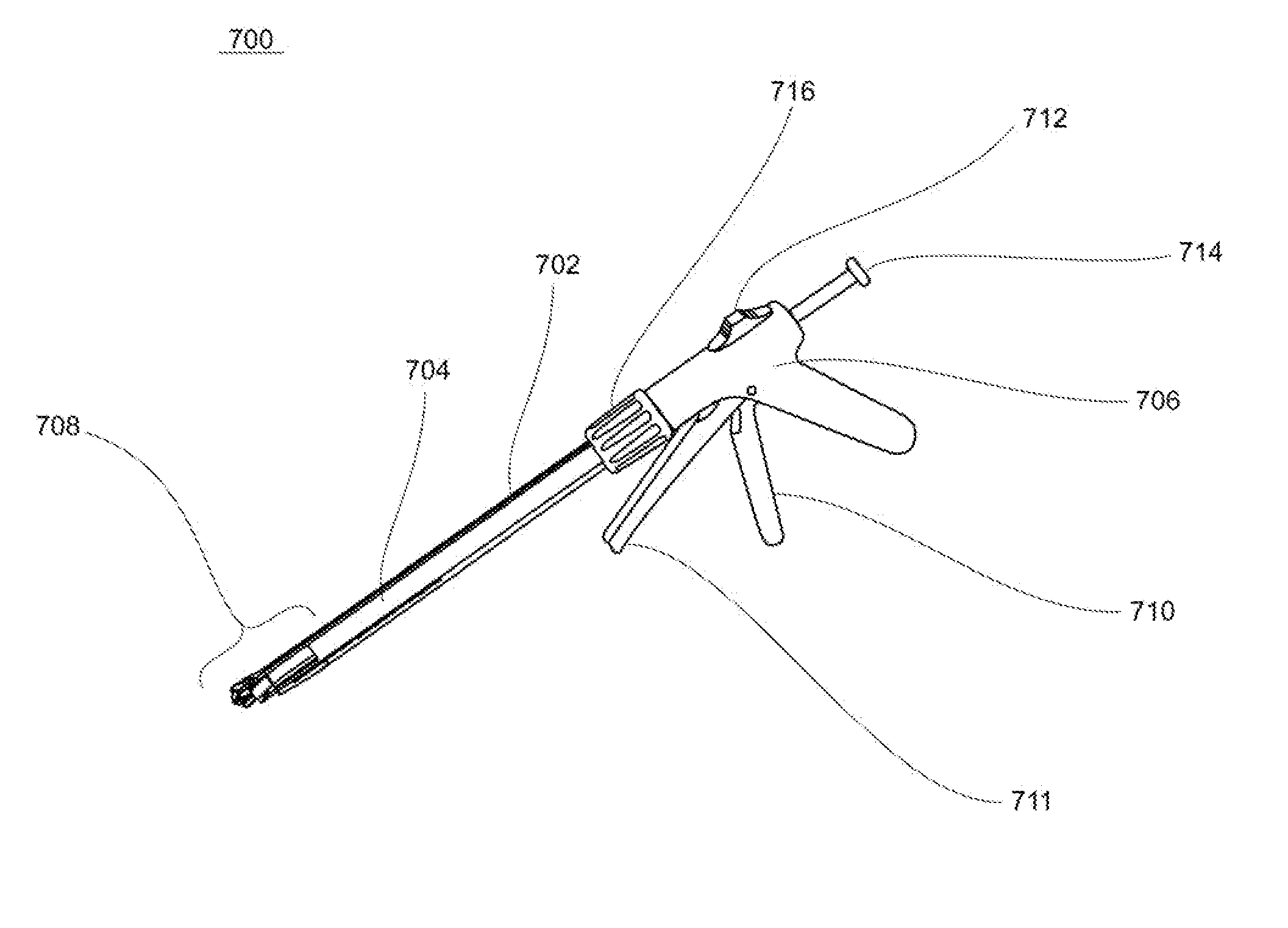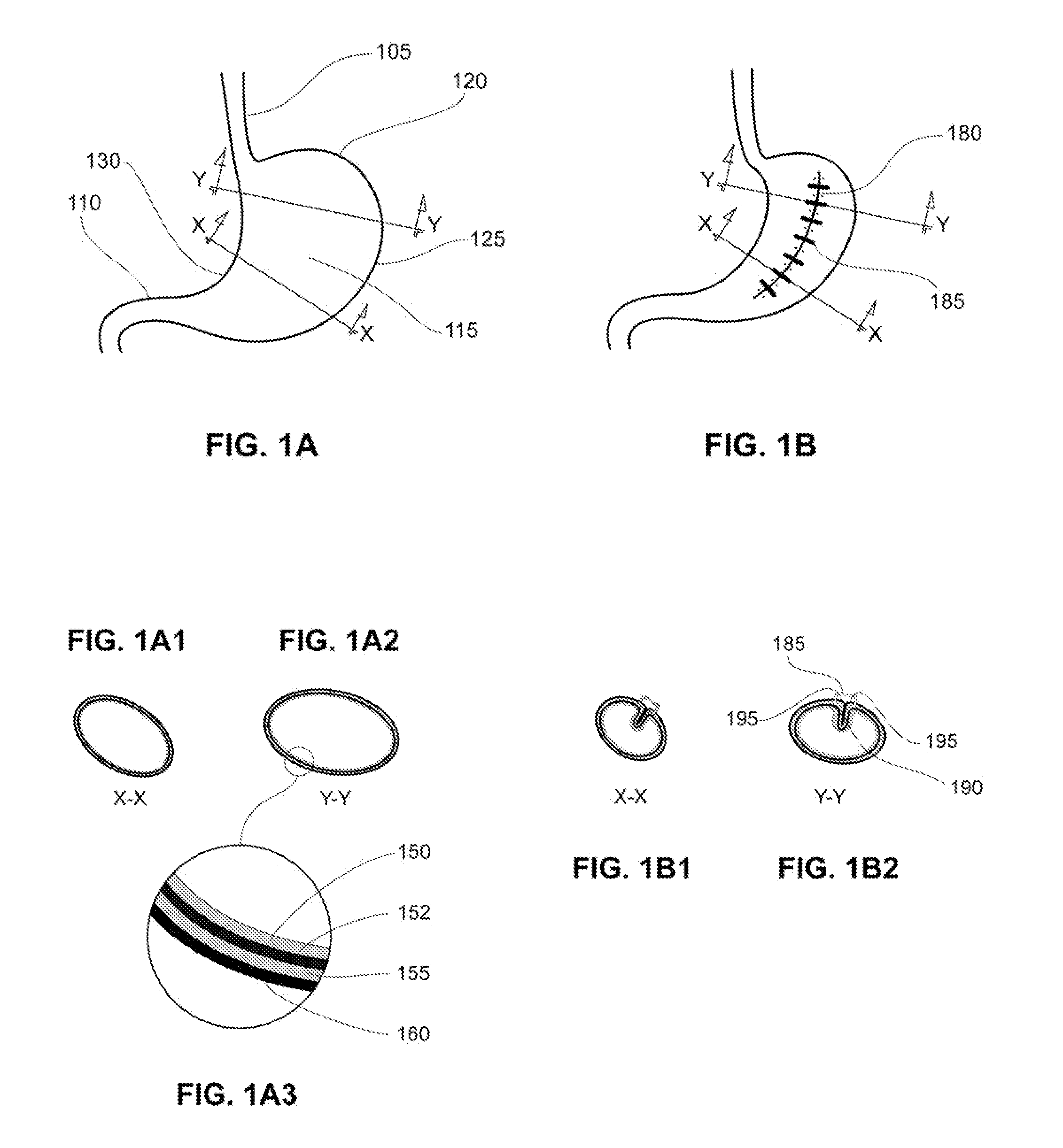Devices for reconfiguring a portion of the gastrointestinal tract
a technology for re-configuring and gastrointestinal tract, which is applied in the field of hollow body organ volume reduction devices, can solve the problems of affecting quality of life, shortening life expectancy, and costing the health care industry billions of dollars annually, and achieves the effect of reducing gastric volume, reducing circumference, and reducing gastric volum
- Summary
- Abstract
- Description
- Claims
- Application Information
AI Technical Summary
Benefits of technology
Problems solved by technology
Method used
Image
Examples
Embodiment Construction
[0047]Methods of the present invention provide effective reduction of the functional volume of the gastrointestinal tract (e.g., stomach) using an extragastric gastroplasty procedure. In this procedure, a portion of the gastrointestinal tract is reconfigured by invaginating and approximating tissue to form one or more tissue folds, and then securing the one or more tissue folds in order to produce one or more plications. While the following detailed descriptions refer in general to reducing the functional volume of the gastrointestinal tract, the stomach in particular, it should be recognized that the invaginaton, approximation and securing methods of the present invention may be used on other body tissues and for other interventional purposes, within the scope of the present invention.
[0048]Gastric reduction procedures of the present invention generally access the gastrointestinal tract via the abdominal cavity. This is most typically accomplished using conventional laparoscopic te...
PUM
| Property | Measurement | Unit |
|---|---|---|
| volume | aaaaa | aaaaa |
| outer diameter | aaaaa | aaaaa |
| outer diameter | aaaaa | aaaaa |
Abstract
Description
Claims
Application Information
 Login to View More
Login to View More - R&D
- Intellectual Property
- Life Sciences
- Materials
- Tech Scout
- Unparalleled Data Quality
- Higher Quality Content
- 60% Fewer Hallucinations
Browse by: Latest US Patents, China's latest patents, Technical Efficacy Thesaurus, Application Domain, Technology Topic, Popular Technical Reports.
© 2025 PatSnap. All rights reserved.Legal|Privacy policy|Modern Slavery Act Transparency Statement|Sitemap|About US| Contact US: help@patsnap.com



